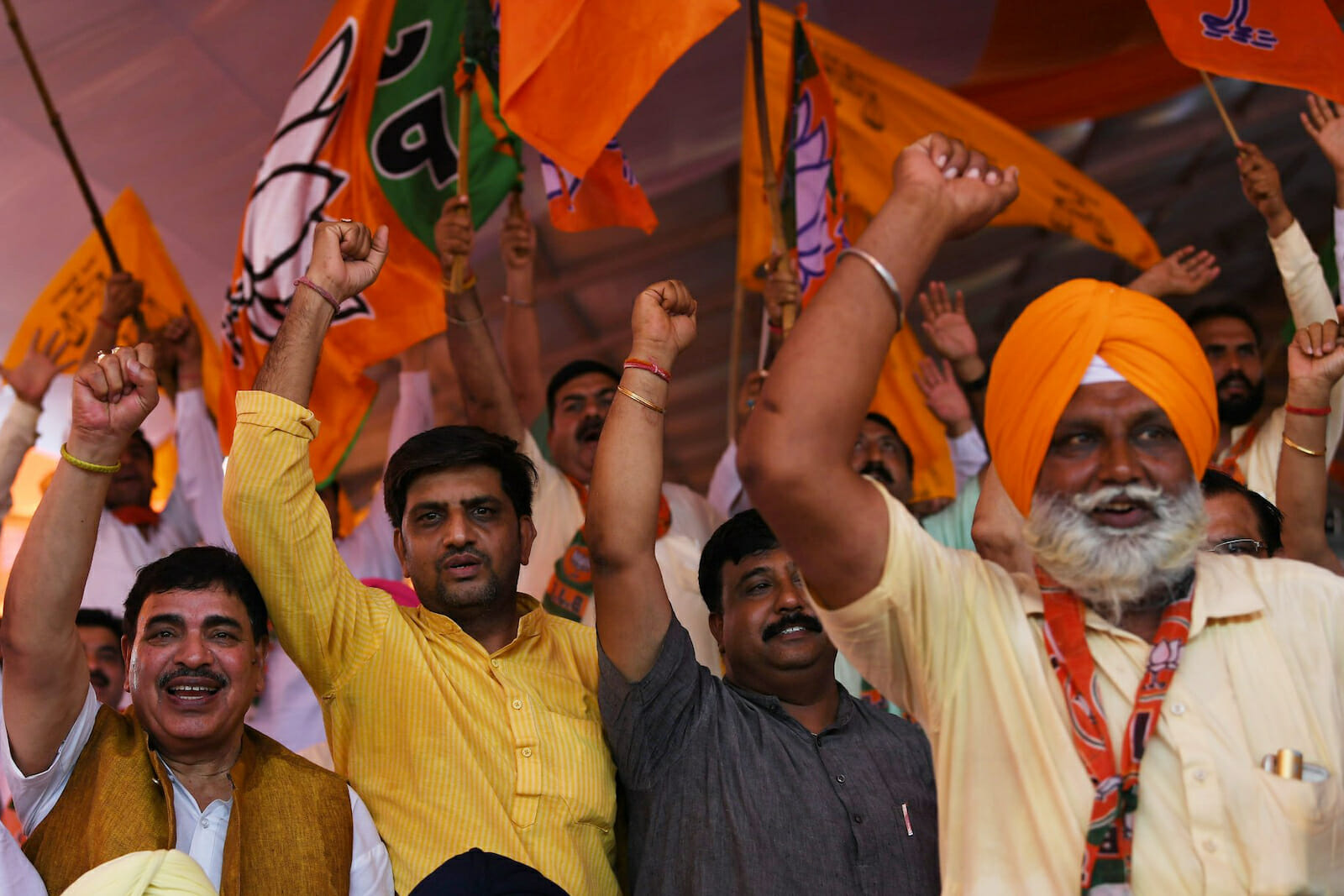
India on the Slippery Slope to Fascism
India, the world’s largest democracy, home to over 1.3 billion people was largely seen as a flag bearer of what democracy could be like in Asia, paving the way for a number of nations still finding their feet with the emergence of more nascent democracies in the region.
The continent of Asia is comprised of majorly two emerging superpowers; India and China. Of the two, China has predominantly followed the path of an authoritarian regime, with political alternatives non-existent, the Communist Party of China exercising a vice-like grip over the Internet coupled with numerous instances of brutal repression of dissent, most notably the Tiananmen Square massacre.
India has, in the meantime, provided a welcome alternative with an enviable record as a democracy barring the blip of the 1975 Emergency. India has consistently portrayed itself and, to an extent, lived up to its reputation as a non-aggressor and has persisted with a policy of non-alignment in order to maintain sovereignty and reject imperialism, in part due to its colonial history.
However, recent times under the right-wing ruling Bharatiya Janata Party (BJP) indicate a departure from the status quo, with the government progressively exhibiting more signs of being a fascist, authoritarian state. Having won a second successive term on the back of a surge of right-wing support and nationalistic fervour, much akin to the rise of Donald Trump in the United States, the BJP government immediately set about implementing the ultimate goal of its ideological parent, the Rashtriya Swayamsevak Sangh (RSS); a Hindu nationalist group which seeks to establish India as a Hindu State.
The path toward fascism can most aptly be described as a slow descent rather than an immediate and overwhelming shift in policy. Hitler’s Germany didn’t transform into a brutal, authoritarian state overnight, but rather was the consequence of Adolf Hitler’s ability to harness the simmering anger of the Germans who faced severe economic hardships post-World War I while simultaneously consolidating power and laying the groundwork for the establishments like the SS which characterised the most brutal facets of Hitler’s rule. In a similar vein, Indian society and government have both crept towards an Orwellian future, accelerated exponentially in the past few months.
India has been a hotbed of communal tension between Hindus, who form the majority in the country, and Muslims; the origin of which lies in part, in the British rule. Seeking to keep a hold on power, the British found it beneficial to follow a policy of divide-and-rule based predominantly on the grounds of religion. The existing differences between the communities were exacerbated by a bloody partition of India into two separate sovereign states in 1947, India and Pakistan, which resulted in the deaths of an estimated 2 million people and the displacement of countless others, as families were torn asunder and stripped of their possessions.
Symptomatic of this divide is the issue of mob-lynchings, an increasingly common phenomenon in India which generally occurs in the form of informal public executions to punish an alleged transgressor. Mob lynchings have often been associated with cow vigilantes who seek to protect and prevent the slaughter of cows seen as sacred under Hindu law, and more often than not, target members of the Muslim minority. Human Rights Watch has attributed this increase in mob vigilantism to the widespread use of communal rhetoric by the BJP.
The BJP recently took the unprecedented step of rescinding the special status afforded to the only Muslim majority state in India, Kashmir. While rolling back of the special status in itself may be debated, what’s far more worrisome is the imposition of an Internet blackout in the State, now formally the longest in any democracy, having crossed 134 days. Access to the Internet is an essential pre-requisite for the freedom of expression in today’s day and age and the government’s decision to restrict a fundamental right under the garb of ‘security and peace’ is reminiscent of China’s social media restrictions, widely regarded as antithetical to democracy and condemned around the world.
The last straw came in the form of the Citizenship Amendment Act (CAA) which, at primary reading, is an inclusive act which seeks to provide refuge to persecuted minorities in the neighbouring countries of Pakistan, Afghanistan, and Bangladesh; a noble ideal by all counts. However, when coupled with the NRC (National Register of Citizens), it reveals a truly disturbing picture of a government seeking to incorporate religion as a ground for citizenship, something which goes against the very secular fabric of the nation itself.
The consequences of this controversial bill were obvious and yet, unexpected. Widespread protests sprung up across major cities declaring the new act immoral and unconstitutional, led majorly by the student themselves which were subsequently dealt with a heavy hand by the government.
15th December proved to be the flashpoint of nationwide protests which began with the police resorting to lathi (baton) charges, lobbing tear gas shells at the students, in the library as well as indiscriminate violence against protestors inside Jamia Milia Islamia University, one of India’s majority Muslim universities. Various reports, corroborated by videos that have surfaced, indicating that the police forcefully broke into the campus and chased students and staff members alike, leading to numerous injuries including one protestor having lost vision in his eye.
This, in turn, triggered a number of demonstrations across the country, most of which were student-led and which, in turn, were met with further police brutality which has since received condemnation from all quarters of the world. As a response to the protests, the Delhi police have resorted to the use of water cannons, tear gas and most recently, the use of drones for the videography of protests. The videography in itself raises numerous questions given privacy concerns as well as the possibility of police harassment of individual protestors based on recordings made during the protests. In addition, the government has resorted to digital repression by way of Internet ‘shutdowns’ on more than 100 occasions in 2019, which represents an extreme form of network control and government censorship of a country’s own population.
The central government also recently issued notices to the vice-chancellors of various central universities requiring them to “monitor and track” the social media accounts of students and teachers under the garb of wanting to “connect” with the students. The government’s decision, in light of its authoritarian tendencies and blatant disregard for the privacy of its citizens, raises a catena of serious moral conundrums.
The government’s policies, which seek to cement a communal divide are, in and of themselves, alarming but far more perturbing is this government’s systematic and brutal repression of any form of dissent which seems to have become the BJP’s go-to move whenever faced with a crisis of confidence.
India’s descent has been steep and could be indicative of the world’s largest democracy finally beginning to capsize, with authoritarian regimes such as China citing India as an example in how to control protests. The consequences of the Indian government’s steps aren’t restricted solely to India and are likely to have international ramifications given the rise of right-wing populist governments who are emboldened by the emergence of authoritarian regimes around the world.

